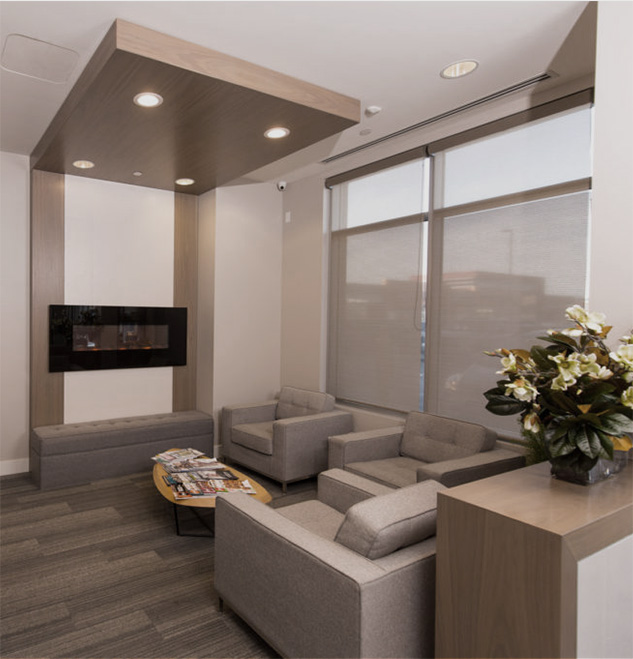Tooth Extraction
One tooth missing is all it takes for your mouth, your jaw, and even your face to react. Sometimes that reaction involves retreat. Your mouth may retreat, your face muscles may come in a little, and notably, your jaw in the place of the missing tooth may hunch down a little. Your jawline, your alveolar bone, might shrink, but you might still want to replace an extracted tooth with a dental implant.
Dental implants are top-to-bottom replacements for the entire tooth, roots and all. But they need a solid foundation to form up properly. When your bone has hunched down too much to provide that solid base for a dental implant, is the point in time when your dentist might recommend a bone graft.
Tooth Extraction
The reason you might need a bone graft in the first place ultimately comes back to having a tooth extraction. A tooth extraction leaves a structural gap in your mouth as well as your bite. Your mouth is a living thing, always adapting to its environment and changes within it.
As the void in your bite grows, other teeth will lean into it, and your alveolar bone, where the roots of the tooth once were, shrink. It might be due to atrophy, decreased blood supply, and localized inflammation of the bone. Whatever the reason, it fails to grow dense and even with the rest of the jawline.
So it retreats given time, usually over a period of 2 to 3 years post-extraction. It’s best to get a dental implant very soon after a tooth extraction, but that’s not always possible.
What is a Dental Implant?
Dental implants are made up of two parts: the root and the artificial tooth or teeth. This design mirrors your natural teeth: there’s a crown, a neck, and a root. The crown sits above the gumline, exposed. The neck sits on top of the alveolar bone, entrenched in your gums. The roots dig into your alveolar bone. The crown is the same size and shape in dental implants, but it’s a synthetic material.
An abutment takes the place of the neck of the tooth, and it makes sure the crown can’t shift away. The roots are replaced by a single titanium screw, burrowing deep into your jaw for stability. The titanium root is inserted into the jaw to replace the root of your natural tooth. An artificial replacement tooth, or teeth, is then secured to the top of the artificial root, which acts as an anchor.
Why You Might Need a Bone Graft
If your jawbone has hunched down a bit where you had a tooth extraction, there might not be enough bone to provide a solid foundation. But a bone graft can restore the surface area that’s shrunk away. By slapping more bone down on top and giving it a chance to heal, you can restore that solid foundation. Without this step, a dental implant would likely fail.
When You Might Need a Bone Graft
Depending on how far down your alveolar bone has retreated, you could get a bone graft at the same time as your dental surgery. Folding a bone graft procedure into a dental implant surgery would be a safe move if your bone has retreated only a little. In cases where there’s a lot more of a void to fill with the graft, you might need to have the bone graft several months before getting the root portion of a dental implant.
How Does a Bone Graft Work?
Dentists take a material that could be bone or synthetic material, called an allograft. Allografts can be blocks, lattice-like sponges, or putty made of bone chips and growth-inducing substances. Whatever the shape, it’ll be fitted into the void where your alveolar bone has retreated. The surgery is the easy part. The goal of the surgery is the hard part, and its purpose is to promote osseointegration.
But a successful bone graft often depends on how well the host (your jaw) accepts the transplant (the new allograft).
What Can You Use for a Bone Graft
Although allografts are a popular choice, autografts and alloplastics are other options. Allografts are solely jaw material, and they can come from your own jaw or the jaw of a cadaver (but taking bone from a cadaver is highly regulated and therefore expensive).
Alloplastics are synthetic bone substitutes if none of the above seems to be a good fit for you. An alloplastic material must be biocompatible with host tissues (i.e., non-toxic, non-allergenic, non-carcinogenic, and non-inflammatory), able to stimulate bone induction, and more.
How to Recover from a Bone Graft
Promoting osseointegration after the surgery takes some help from your dentist, but also from your own efforts. While not a complete list, there’s a lot you can do:
- Keep up with medications as prescribed.
- Do not spit, drink through a straw, rinse, enjoy lozenges for at least 24 hours.
- Apply ice or cold compresses to swollen areas as directed.
- Eat only soft foods and avoid chewing near the site of the surgery until you return for a follow-up appointment. Avoid hot liquids until the anesthesia has worn off.
- Remain with your daily brushing and flossing but avoid the surgical site.
- Refrain from using an electric toothbrush near the site of the surgery for six to eight weeks following your procedure.
- Call on your dentist if you need to.
The main risk of a bone graft lies in the possibility of your body rejecting it. Pain and swelling could persist beyond the immediate aftermath of surgery, which could indicate a problem. Infection can set in as well, and in some cases, there might be bone separation as the body takes it for a foreign object.
Bone Grafts as a First Step
After the bone graft, there are still a few more hurdles. After all, the point of the bone graft remains to provide a foundation for a dental implant’s titanium root. The above advice goes double when your successful bone graft needs to fuse to a dental implant root.
Ask Your Dentist About Bone Grafts
It really depends on the patient which set of choices for bone graft surgery will work best. Your dentist can identify whether allograft, autograft, or alloplastic will serve you. They can also schedule it with enough time for recovery and when you need it most. Bone grafts are the first step to reclaiming a full and healthy bite, so feel free to book an appointment and find out how we can best navigate this step.







